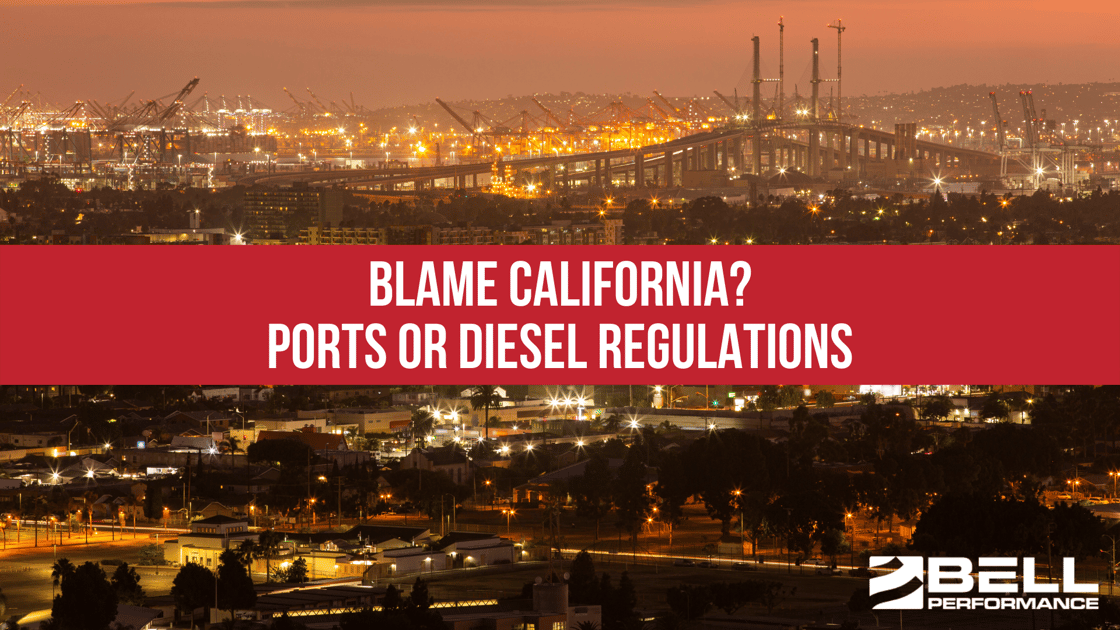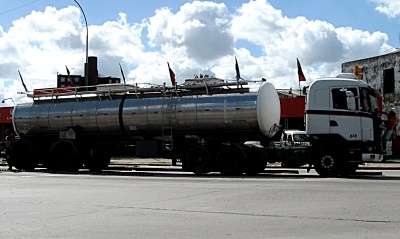How Biofuels Have Changed the Fuels We Use Today: Part 1
As a service to our customers, dealers and friends, Bell Performance hosts quarterly webinars on fuel topics of interest to them and their customers....

The start of the holiday season looks a little different this year than in years before. Everything isn’t shut down but we are going into our first holiday season post-COVID. After more than a year of “abnormal circumstances”, we might be getting back to some semblance of normal. Except for the shipping delays, of course. The USPS and shipping companies like FedEx/UPS have been working non-stop virtually all year while dealing with staffing shortages. Those who want to score political points are quick to lay all the blame on one individual or another. In truth, any problem like this is too complicated to assign blame on just one thing.
![]() One story making the rounds in mainstream news and on social media concerning the backlog of freight at ports around the country, but especially in California. One explanation is that the freight backlog is a result of “regulations” that California has placed on the trucking/transportation industry specifically having to do with “the phaseout of diesel engines”.
One story making the rounds in mainstream news and on social media concerning the backlog of freight at ports around the country, but especially in California. One explanation is that the freight backlog is a result of “regulations” that California has placed on the trucking/transportation industry specifically having to do with “the phaseout of diesel engines”.
For those favoring simple explanations for complex problems no matter what, it shouldn’t be surprising that they’re laying the blame for the problem of the ports in this kind of executive directive. Yet, the simple explanation is that California’s new diesel engine regulations have little to do with the cargo backlog we're currently looking at. How do we know? Let’s look at what the new California diesel engine regulations actually are.
In late 2020, California governor Gavin Newsome signed an executive order detailing new requirements for diesel vehicles within the state of California. There’s a lot of people assigning blame to the new regulations who may not actually know what they entail.
Here are the important details of the new set of rules
The rationale behind these rules is environmental. California wants to be the leader in the movement towards as low a carbon footprint as possible.
Let’s talk about each of these points.
Only electric vehicles by 2045 - How is it possible to require these all-electric vehicles? Turns out, the market has been anticipating this for a while. As of March 2021, there were 93 ZEV (zero-emission vehicle) models available, and this is expected to grow to 109 just in the next two years. By 2045, things are going to look completely different.
2035? 2045? What’s going to happen to all these electric trucks when they run out of juice and there’s no place to charge them? - California’s trying to get ahead of this hurdle by investing at least $700 million in new electric charging infrastructure in just the next two years. Analysts believe that will be enough to cover 18,000 ZEVs. You can bet more investment is on the way. How much will it cost each time you charge a ZEV? That's a subject for another time.
Are all these non-electric trucks suddenly going to be illegal? - No, of course not. They will be forced to be phased out over time, which is where the 800,000/18 yr limit comes in. There is that hard stop. Electric or zero-emission trucks will be phased in over time around them.
Is this really what’s to blame for problems getting freight where it needs to be? - Circling back to the problem of the port. When people point to these kinds of regulations and try to blame them for what’s happening with the global shipping supply chain, they’re making a mistake in not considering that much of the effect of these rules hasn’t really been felt yet. Newsome's executive order is still pretty recent news. It’s not to blame for freight stacking up at the ports.
If it’s not this, what really is to blame for the port problems? - As we said earlier, it’s complicated. There are multiple factors all coming together. We’re still not that far gone from a global pandemic that virtually shut down commerce. It takes a long time to get such a juggernaut back going again, and that’s even if there are no hiccups. Staffing shortages certainly can qualify as hiccups, since there are still many people who have decided they don’t want to go back to the jobs they were in before. Everyone has their own reasons and it’s going to take time for all of this to shake out.
As a service to our customers, dealers and friends, Bell Performance hosts quarterly webinars on fuel topics of interest to them and their customers....
If you manage a business or administer a budget for a government agency on the state or local level, how much is your fuel budget? Do you ever have...

As a service to our customers, dealers and friends, Bell Performance hosts quarterly webinars on fuel topics of interest to their friends and their...